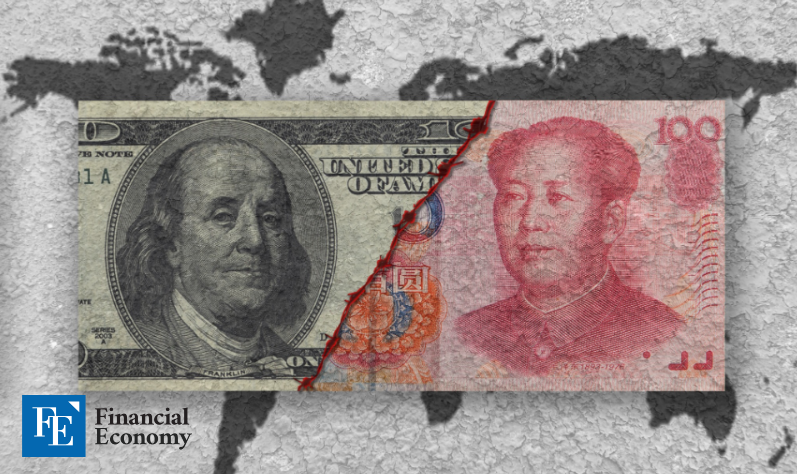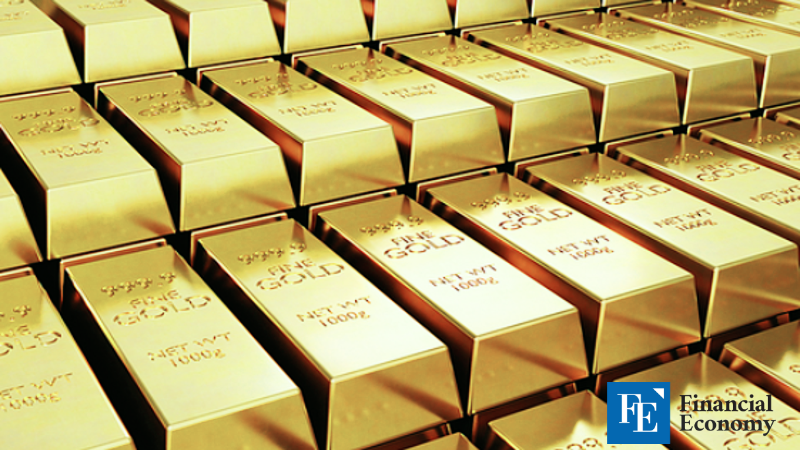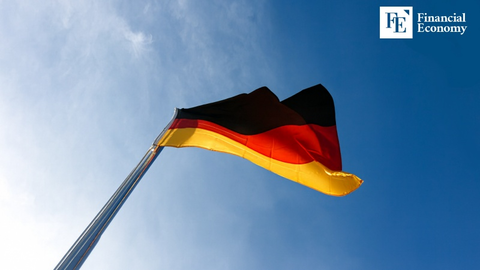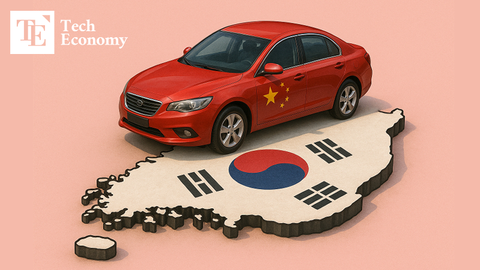Currency Wars: An Unstable Dollar, and the Rise of the Yuan and Gold's Resurgence
Input
Modified
Redefining What Constitutes a ‘Reliable Asset’ China Reshaping the De-Dollarization Landscape Active Moves to Increase Gold Reserves

The U.S. dollar’s status as the world’s reserve currency appears to be wavering. Amid growing political instability in the United States and interest rate risks, central banks around the world are overhauling their foreign exchange reserve strategies. As the share of the yuan and the euro gradually increases, plans to boost gold reserves are also becoming clearer. Recently, even emerging economies have begun actively moving to break free from dollar dependence, accelerating the shift toward a multipolar global currency system.
U.S. Political Instability + Interest Rate Volatility → Decline in Dollar Trust
According to Reuters on the 24th (local time), one in three global central banks plans to increase their gold reserves within the next one to two years. Reuters explained, “A survey by the Official Monetary and Financial Institutions Forum (OMFIF), which polled 75 central banks managing approximately USD 5 trillion in foreign exchange reserves, showed that the number of central banks planning to increase gold holdings far exceeded those intending to reduce them.”
Among currencies, the euro ranked first as the currency most central banks planned to increase in their reserves. About 16% of surveyed central banks said they would expand their euro holdings over the next two years. The Chinese yuan came in second, followed by the Japanese yen, the Australian dollar, the Canadian dollar, and the British pound. The U.S. dollar, which topped the list in the same survey last year as the currency most likely to see increased holdings, fell to seventh place this year.
Central bank officials cited the unstable political environment in the United States as the most significant reason for avoiding dollar investments. They pointed to President Donald Trump’s global tariff threats and the resulting chaos, as well as his attempts to undermine the independence of the Federal Reserve (Fed), as major factors that have severely damaged trust in the dollar, which has traditionally been classified as a safe asset.
Based on these survey results, OMFIF forecasts that by 2035, ten years from now, the dollar’s share of global foreign exchange reserves will average around 52%. While it will remain the number one reserve currency, this would mark a significant decline from its current 58% share. In contrast, the euro is projected to account for about 22% of global foreign exchange reserves in ten years.
Kenneth Rogoff, former Chief Economist at the IMF, commented, “The rise of the euro is driven less by confidence in the European economy and more by the weakening status of the dollar,” adding, “At present, the euro is the only alternative currency capable of bringing significant changes to foreign exchange reserves.” He noted that the Chinese yuan still suffers from limited flexibility due to government capital controls.
Yuan Taking Some of the Dollar’s Lost Ground
However, market sentiment appears far more favorable toward the yuan than many experts had predicted. Despite concerns over capital controls and international flexibility, the yuan has begun to secure a measurable share in the recent global trend of foreign reserve diversification. In particular, its share in trade settlements is rising among emerging economies in Southeast Asia, Africa, and Latin America, which are actively seeking to reduce their dependency on the dollar. The yuan’s growing presence is becoming increasingly evident not just in reserve portfolios but also as a preferred settlement currency for trade and investment contracts.
On May 4, the 10 ASEAN countries plus Korea, China, and Japan, the so-called “10+3” nations, officially approved a new rapid financing mechanism during a meeting in Milan, Italy. This mechanism will, for the first time, operate on a regional currency basis, including the yuan. Analysts say this step was prompted by the financial instability caused by President Trump’s global tariff policies, as well as the strengthening of Asian currencies and the recent sharp volatility in the U.S. Treasury market.
Meanwhile, China’s government continues to push forward with its strategy to internationalize the yuan. Through various initiatives, such as the Asian Infrastructure Investment Bank (AIIB), the Regional Comprehensive Economic Partnership (RCEP), and pilot programs for the digital yuan, China has steadily worked to build alternatives to the dollar-centric system. Recently, there have been active discussions among BRICS nations regarding the establishment of a joint payment network and the expansion of regional currency settlement systems. This trend reflects not just China’s pursuit of strategic interests but also a voluntary shift by countries fatigued by U.S. risks, marking a highly significant change.
The yuan’s growing influence is also visible in actual figures. According to the Society for Worldwide Interbank Financial Telecommunication (SWIFT), as of April, the yuan accounted for 5.2% of the global payments market—its highest-ever share. This surpasses both the Japanese yen and the British pound, making it the only non-European currency to maintain a steady upward trend. SWIFT explained, “The use of the yuan is rapidly increasing in transactions with major resource-exporting countries like Russia, Brazil, and Saudi Arabia.”

Preference for “Tangible Assets Over Cash” — The Return of Safe-Haven Assets in an Era of Uncertainty
As central banks around the world reduce their holdings of U.S. dollars, another prominent alternative that has emerged is gold. Unlike cash or bonds, gold is not exposed to the default risk of any specific issuer and enjoys absolute trust in terms of durability and liquidity as a tangible asset. The market volatility and geopolitical uncertainties of recent years have revived the formula: “Better physical assets than cash.” As a result, central banks are actively increasing their gold holdings as a means of portfolio diversification.
According to a survey by the World Gold Council (WGC), 95% of 73 central banks worldwide expect global central bank gold reserves to increase over the next 12 months. Additionally, 43% of the surveyed central banks said they plan to increase their own gold reserves within the same period. This is a significant jump from 29% in 2024 and marks the highest level since the WGC began conducting this survey.
The WGC explained, “Emerging economies, in particular, are showing a clear trend of increasing their gold holdings as part of a strategy to reduce dollar dependency while enhancing the stability of their internal reserves.” Countries cited by the WGC include Russia, India, Turkey, and Kazakhstan, all of which have been aggressively boosting their gold reserves for several years. A common thread among them is their aim to curb the influence of the U.S. financial system and prepare for potential sanctions.
Thus, the expansion of gold holdings is now being re-evaluated not just as a safety buffer but also as a tool for maintaining monetary policy independence and financial stability. Growing internal pressure within central banks is driving the push to hold more assets that are not directly exposed to U.S. interest rate policies or political risks. As a non-interest-bearing asset untied to any particular currency bloc, gold becomes increasingly attractive as foreign reserve strategies lean more toward uncertainty avoidance. Predictions of a prolonged period of dollar weakness are further fueling this trend.





















